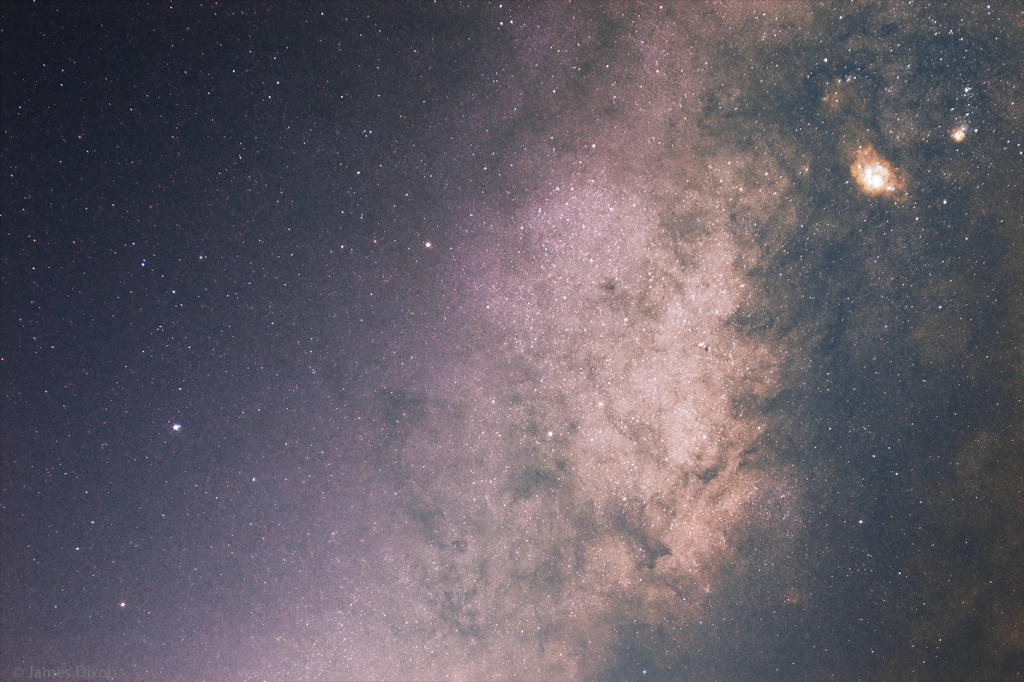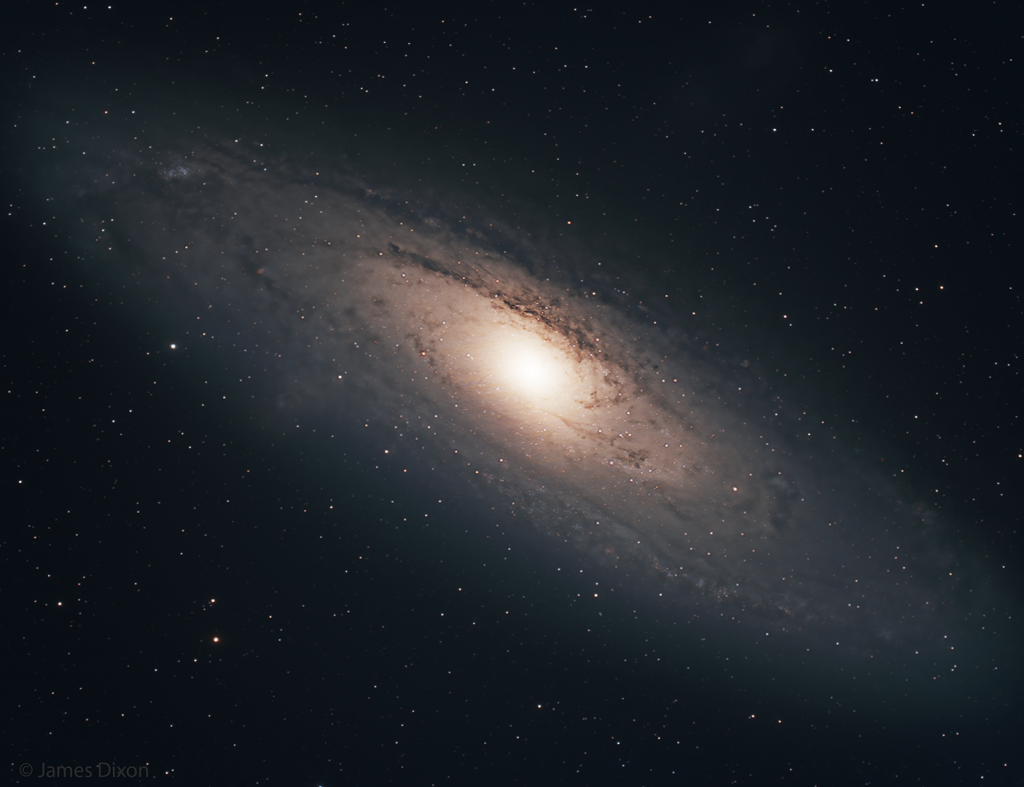
Here is an image of the center of the Milky Way taken Wednesday night while I was trying to see Perseids. I used my Canon 800D with an 85mm prime lens at f/2.5 and a light pollution filter. The image was made from 26 two minute images, stacked then processed in Photoshop. In the upper right, the brightest object is the Lagoon Nebula and to the right and above that is the Trifid Nebula. Below the center, inside the Milky Way, the bright star is Alnasl and it is the tip of the spout of the Teapot. Well above and to the left of Alnasl is Klaus Media. Well to the left but almost even vertically of Alnasl is Klaus Australis. These are the three brightest stars in the image and form the three stars of the spout of the Teapot.

